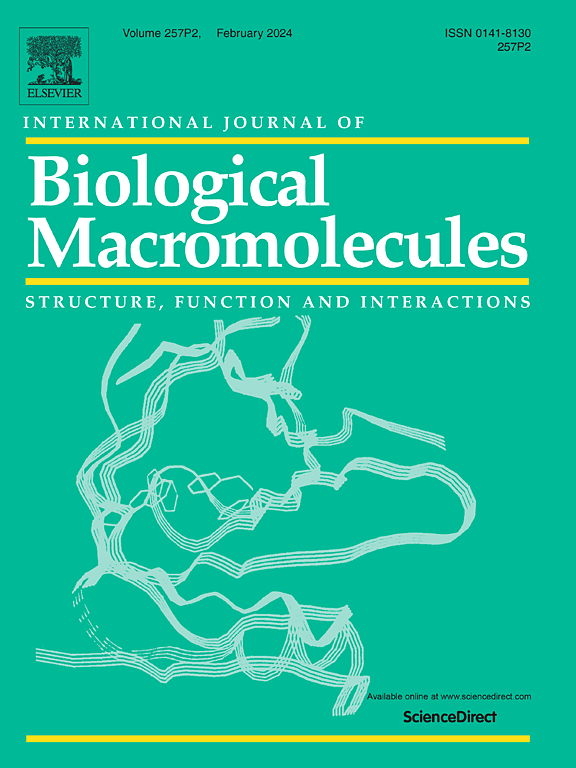Lignin-based biochar with improved properties derived from the microbial combined chemical pretreatment of corn straw for efficient antibiotic removal
IF 7.7
1区 化学
Q1 BIOCHEMISTRY & MOLECULAR BIOLOGY
International Journal of Biological Macromolecules
Pub Date : 2025-04-01
DOI:10.1016/j.ijbiomac.2025.142739
引用次数: 0
Abstract
In this study, straw lignin was separated from corn straw by combining microbial treatment with ρ-TsOH organic acid extraction for the first time, and lignin-derived biochars were prepared by carbonation-activation. The results showed that the extraction rate of lignin and the physicochemical properties of related biochars were improved greatly by microbial treatment. The specific surface areas of lignin biochar obtained after combined pre-treatment with Aspergillus niger, Myrothecium verrucaria, and Trichoderma reesei, (BNL, BML, and BTL) were 2348, 2849 and 3008 m2 g−1, respectively, and the total pore volumes were 0.8989, 0.9411, and 1.2621 cm3 g−1, which were significantly higher than the 2292 m2 g−1 and 0.7786 cm3 g−1 of the control group BCL (biochar prepared from lignin extracted from raw straw). In adsorption experiments by using tetracycline hydrochloride and sodium sulfadiazine as antibiotic models, the maximum adsorption capacities of all lignin-derived biochars (BML, BTL, and BNL) were greater than that of most other adsorbents including BCL. We hope this work could provide a new strategy for efficiently using microbial treatment technology to improve the conversion of lignocellulosic resources.
求助全文
约1分钟内获得全文
求助全文
来源期刊
CiteScore
13.70
自引率
9.80%
发文量
2728
审稿时长
64 days
期刊介绍:
The International Journal of Biological Macromolecules is a well-established international journal dedicated to research on the chemical and biological aspects of natural macromolecules. Focusing on proteins, macromolecular carbohydrates, glycoproteins, proteoglycans, lignins, biological poly-acids, and nucleic acids, the journal presents the latest findings in molecular structure, properties, biological activities, interactions, modifications, and functional properties. Papers must offer new and novel insights, encompassing related model systems, structural conformational studies, theoretical developments, and analytical techniques. Each paper is required to primarily focus on at least one named biological macromolecule, reflected in the title, abstract, and text.

 求助内容:
求助内容: 应助结果提醒方式:
应助结果提醒方式:


